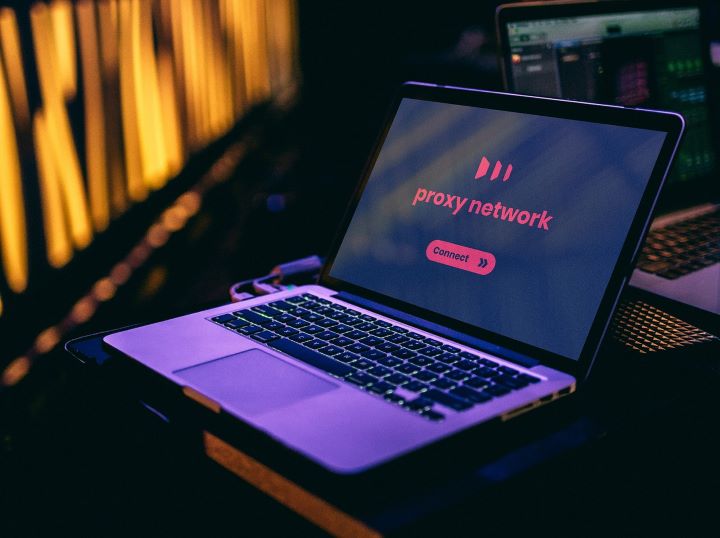What’s Wrong With Proxy-based SaaS Security And Why You Still Should Use It

Have been hearing a lot about proxy-based SaaS security solutions lately? If you’re in the loop with cybersecurity trends, chances are you’ve come across some heated debates. On the one hand, these solutions are praised for their efficiency and ease of use. On the other, complaints about vulnerabilities might have reached you, too. All this may be leaving you in a dilemma: to continue using this model or search for alternatives. In this guide, I will cover all there is to know about the subject so you can make an informed decision.
What Is Proxy-based SaaS Security?
Before all else, let’s define what we mean by proxy-based SaaS security. At its core, it is a cloud-based security model that relies on proxies. The latter acts as a middleman between your users and the internet.
Here’s how it works. Imagine your internet traffic as a stream of signals. Before these signals can reach their destination (the web), they must pass through a checkpoint (the proxy server). This checkpoint examines each signal, checking for anything suspicious like malware or unauthorized access attempts. It only lets through what’s deemed safe. This way, threats are stopped before they can enter your network.
But that’s not all. These solutions come packed with a suite of helpful features. These include
- URL filtering which blocks access to dangerous sites;
- threat prevention which identifies and blocks potential threats in real time;
- and data loss prevention which prevents sensitive information from leaving your network.
All of this is managed off-site by a third-party provider. This means you get the services of experts, without paying for in-house hardware or personnel.
What sets this model apart from traditional on-premises solutions is its cloud-based nature. In essence, it offers a modern approach to protecting your digital assets. You outsource the heavy lifting to cloud-based services and enjoy enhanced safety, streamlined operations, and peace of mind.
Yet, as is always the case, the system has its vulnerabilities. And as you will see in the next section, they are quite serious ones.
4 Key Issues with Proxy-based SaaS Security

Latency and Performance Impact
One obvious issue is that all your traffic needs to detour through a proxy server for inspection before reaching its final destination. This can introduce latency and slow down the flow of information. In practical terms, this might mean
- a lag in loading web pages,
- delays in transaction processing,
- or hiccups in real-time applications.
For businesses that operate on a global scale or depend heavily on real-time data, these delays can lead to significant productivity hits. And yes, as you’ve already guessed, in the long run, it is sure to affect customer satisfaction.
Limited Visibility and Control Over Encrypted Traffic
Encryption is a double-edged sword. On the one hand, it’s a must for protecting data in transit. On the other hand, it poses a challenge for proxy servers tasked with inspecting traffic.
The issue here is that if the proxy server isn’t set up to decrypt this traffic or can’t handle advanced encryption standards, it can’t inspect the data passing through. This creates a significant vulnerability. Cyber attackers can conceal malicious actions within encrypted traffic. That is, a large part of your network traffic might go unchecked by your protocols and expose you to potential cyber threats.
Risk of Data Exposure Through Third-party Servers
Your data travels through and is processed by external servers. This can (and, in fact, should) raise concerns about data exposure. If the third-party service provider doesn’t follow strict security protocols or suffers a breach, your sensitive information could be at risk.
This is, first and foremost, a reminder of the importance of choosing legitimate providers. When choosing, you should, at least, understand how they encrypt data, and what measures they have in place to prevent unauthorized access.
Dependency on Third-party Providers
I’ve already touched upon this above but the thing is that outsourcing any part of your IT infrastructure also introduces a level of dependency. This dependency means that any downtime, outages, or security lapses on the part of the service provider directly affect your business.
And we’re back to the core dilemma. Offloading cybersecurity responsibilities frees up valuable resources and allows access to specialized expertise. That’s one perspective on it. In the meantime, outsourcing requires a high degree of trust. And that might be an issue.
3 Reasons to Still Use Proxy-Based SaaS Security
After we’ve outlined the vulnerabilities, it might appear that the smartest thing to do is to just dismiss proxy-based security solutions. But I wouldn’t recommend doing that. Here’s why.
Comprehensive Security Features
The model provides a robust set of tools that do defend against a wide array of cyber threats. Features like URL filtering, threat prevention, and data loss prevention offer a multi-layered defense mechanism that is hard to replicate with a single, on-premises solution.
Scalability and Flexibility
The cloud-based nature of this security approach offers unparalleled scalability and flexibility. It allows your business to adjust its security measures as it grows. I probably don’t need to explain how valuable it is today when we are working in a super fast-paced digital environment.
Access to Expertise
A proxy gives you access to specialized expertise and continuous updates that might be difficult or cost-prohibitive to maintain in-house. If you manage to find a truly great provider, you’ll get access to exclusive expertise. Such providers invest heavily in research and development so your defenses will always be up to date.
Want maximum guarantees? Find award-winning proxy providers here!
Managing the Cons of Proxy-based SaaS Security: Quick Tips
If you’ve decided to stick with the model (which is a generally smart decision), make sure you address its inherent vulnerabilities head-on. Here are practical steps to take in this regard.
Combine It with Other Security Tools
First thing first, consider integrating proxies with a broader suite of tools. Identify the specific vulnerabilities within your current setup that proxy solutions might not fully cover. Then, look for complementary tools that can fill these gaps. For example, endpoint security solutions can protect individual devices from malware and phishing attacks. Or, intrusion detection systems (IDS) can monitor your network for suspicious activities.
To integrate these tools, ensure they can share data and alerts between them. For this, you’ll need to configure APIs or use security orchestration, automation, and response (SOAR) platforms. The task is to create a cohesive ecosystem where information flows seamlessly.
Ensure Proper Configuration to Minimize Latency
One of the chief complaints about the model is the potential for added latency. However, with proper configuration, you can minimize this issue. Select proxy servers that are geographically close to your user base or distributed across multiple locations to balance the load. Use content delivery networks (CDNs) to cache frequently accessed resources closer to users. This is helpful because it reduces the need for every request to pass through the proxy.
Besides, consider implementing split tunneling. With it, only traffic that requires scanning goes through the proxy, while low-risk traffic bypasses it. As you’ve already guessed, this significantly reduces the volume of traffic that needs inspection and lessens the load on the proxy which means fewer delays.
Conduct Regular Security Audits
Nothing new here — regular audits are still crucial for identifying vulnerabilities. Start by conducting a comprehensive audit of your entire IT infrastructure. Focus on how data flows through your proxy servers. Look for any misconfigurations or outdated rules that could introduce security gaps.
A good idea is to employ external experts to perform penetration testing. This involves simulating cyber attacks to test your defenses. I strongly recommend this practice as it provides invaluable insights into how real-world attackers could exploit your system.
Based on the audit findings, update your policies and configurations. As a rule, this will involve
- tightening access controls,
- updating encryption standards,
- and/or revising traffic filtering rules.
Remember — if you want your audits to really work, set up a schedule for them. They are most effective when they are consistent and regular.
Beyond Proxies: More On Helpful Instruments In SaaS Security

While proxies play a crucial role in SaaS security, complementing them with additional measures never hurts. I’ve already described some essential tools and practices that can enhance your security posture and here are some more.
- Multi-Factor Authentication (MFA)
MFA requires users to provide two (then, it’s 2FA) or more verification factors to gain access to resources. This can include something the user knows (like a password), something they have (like a smartphone), or something they are (like a fingerprint). MFA is effective at preventing unauthorized access, even if passwords are compromised.
- Endpoint Detection and Response (EDR)
As their name implies, EDR solutions continuously monitor endpoints (like laptops and mobile devices) for suspicious activities. They use advanced analytics to detect threats that might bypass other measures. These solutions can identify malware, ransomware, and even insider threats.
- Security Information and Event Management (SIEM)
SIEM technology aggregates and analyzes log data from across your entire IT environment. It reviews your security landscape to find trends and patterns that might indicate a breach. By correlating data from multiple sources, it helps pinpoint subtle signs of APT activities.
- Cloud Access Security Broker (CASB)
Like proxies, CASBs act as intermediaries between your users and cloud services. They can help manage access controls, encrypt sensitive data, and prevent data loss. They are particularly useful for organizations that use multiple cloud services.
Final Thoughts
As you’ve seen the vulnerabilities of proxy-based SaaS security are not a myth. And yet, when properly managed, this model offers substantial benefits. The comprehensive security features, scalability, and access to expertise — these are great assets. So, should you continue using it? I’d say yes. But do so wisely. That is, combine it with other instruments, ensure proper configuration, and conduct regular audits. This will help you stay protected, agile, and ahead of potential threats.
FAQs
Yes, the model is ideal for remote teams. It provides safe access to company resources from any location and ensures that your team’s internet traffic is monitored and protected.
Most providers have the resources to handle significant traffic volumes. They use cloud infrastructure to scale resources dynamically and see to it that your internet traffic flows smoothly without compromising on security.
Aim for at least semi-annual audits, with additional checks following any major changes to your IT infrastructure or the introduction of new threats.
While no security solution can offer 100% protection against zero-day exploits, the proxy-based model can reduce the risk. It often includes advanced threat detection mechanisms that can identify and mitigate suspicious activities, even from previously unknown vulnerabilities.
